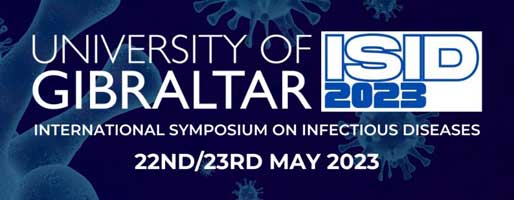












100% closure rate of pressure ulcers
Download Publication
Download Publication
Download Publication
NH ( patient)
NH ( patient)
NH ( patient)
Only natural ingredients
Only natural ingredients
Only natural ingredients
VH (patient)
VH (patient)
VH (patient)
News
2024
March 25'th, 2024 - SCI British Columbia publishes article about Amicapsil in their magazine SPIN.
January 5'th, 2024 - MPPT clinical study published in Frontiers in Medicine
The clinical study “Stable closure of acute and chronic wounds and pressure ulcers and control of draining fistulas from osteomyelitis in persons with spinal cord injury: non-interventional study of MPPT passive immunotherapy delivered via telemedicine in community care” has been published in Frontiers in Medicine.
2023
October 8'th to 11'th, 2023 - International Spinal Cord Society (ISCoS) conference in Edinburgh - SIA
Damian Smith from SIA (Spinal Injuries Association) presented the poster: “Addressing the challenges of treating pressure ulcers following spinal cord injury with Amicapsil-SCI micropore particle technology”, which describes the outcome of the survey conducted in July 2022 on user-experiences with Amicapsil. Here are the abstract and the poster.

October 8'th to 11'th, 2023 - International Spinal Cord Society (ISCoS) conference in Edinburgh - Willingsford

August 19, 2023 - UK petition started to have Amicapsil approved for reimbursement by the NHS.
A petition has been started by Steven Parry in order to have Amicapsil approved for reimbursement by the NHS. The petition is here at Change.org: https://www.change.org/p/make-amicapsil-available-to-all-uk-pressure-sore-ulcer-sufferers.
Steven also released a video in connection with the petition. Furthermore, SIA (Spinal Injuries Association) highlighed the petition on their website: https://spinal.co.uk/news/amicapsil-sci-petition/
May 22 to 23, 2023 - Presenting at symposium arranged by University of Gibraltar
March 23 to 25, 2023 - Presenting at BSAVA annual meeting
Willingsford has been selected for an oral presentation at the annual British Small Animal Veterinary Association (BSAVA) meeting in Manchester, 23-25 March 2023.

2022
November 14 to 17, 2022 - Willingsford selected to be part of the UK Healthcare Pavilion 2022-2023 by the Department for International Trade.
Willingsford has been selected to be part of the UK Healthcare Pavilion 2022-2023 by the Department for International Trade. Willingsford was selected based on its innovative technology, MPPT, which is effective in treating wound infections, including antimicrobial resistant infections. MPPT is available as Amicapsil for clinical use and SertaSil for veterinary use.

September 28, 2022 - Willingsford presents new video with focus on antimicrobial resistance
September 15 to 18, 2022 - Willingsford presents at the 61'th annual meeting of the International Spinal Cord Society in Vancouver, Canada
Willingsford gave an oral presentation of the outcome of its latest clinical study at the 61’th annual meeting of the International Spinal Cord Society in Vancouver, Canada. See presentation here

September 12 to 15, 2022 - Willingsford presents at the Military Health System Research Symposium (MHSRS) in Orlando, Florida
Willingsford gives oral presentations on the treatment of antimicrobial resistant wound infections and presents a poster on the treatment of burns at the Military Health System Research Symposium (MHSRS).

July 11, 2022 - Willingsford launches two new videos on the use of Amicapsil for treating wounds.
In two new videos, we describe how to continue the treatment of the wound after the first day.
Humans
Evidence
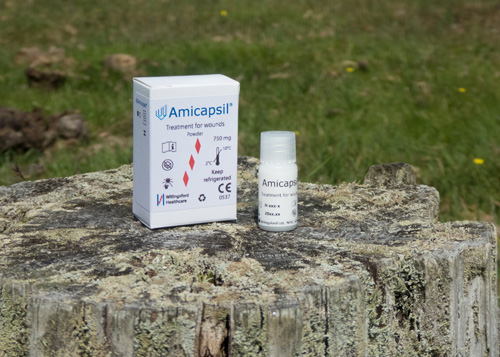
Veterinary
Evidence
2021
October 29, 2021 - Willingsford presents at the 27th Australian and New Zealand Spinal Cord Society, Annual Scientific Meeting
Willingsford presents its new study using Amicapsil-SCI for treating wounds and pressure ulcers in spinal cord injured persons at the annual ANZSCoS (Australian & New Zealand Spinal Cord Society) meeting.

October 27, 2021 - Founding of Willingsford Danmark, filial af Willingsford Limited, England
Willingsford Ltd. today opens an establishment in Denmark to represent Willingsford in the EU.The name of the establishment is Willingsford Danmark, filial af Willingsford Limited, England.

October 19, 2021 - Willingsford presents at EPUAP 2021
Willingsford presents its new study using Amicapsil for treating pressure ulcers at the annual EPUAP (European Pressure Ulcer Advisory Panel) conference.

April, 2021 - Amicapsil-SCI is approved in the UK and EU.
Based on new clinical data in a patient population with severe chronic immune suppression, MPPT has received approval as Amicapsil-SCI. It is specifically intended for treating wounds in individuals who are immunocompromised or immunosuppressed, including persons with SCI.
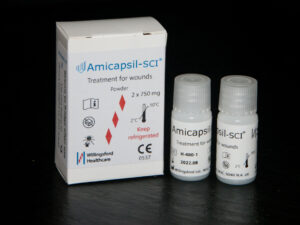
2020
December, 2020 - Spinal Cord Injury BC (SCI BC) from British Columbia, Canada brings feature article on Amicapsil.

December, 2020 - The Danish Spinal Injured Association RYK! in their quarterly magazine focuses on pressure ulcers and features Amicapsil in two articles

August 4, 2020 - New report by the Defence Medical Rehabilitation Centre (MoD) on the use of Amicapsil for treating a nonhealing pressure ulcer in BMJ Military Health.
Abstract:
Current management of chronic wounds involves regular wound cleaning, antiseptic dressings and, when indicated, antimicrobials. Micropore particle technology (MPPT) is a novel concept for wound healing, aiming to bolster the action of the immune system by disrupting the wound biofilm and restoring the microbiome. Amicapsil is the first MPPT product licensed for clinical use. Patients with a spinal cord injury (SCI) are more likely to develop chronic wounds due to downregulation in their immune response increasing the risk of a minor wound, such as pressure sore, developing into large, non-healing wounds. At the Defence Medical Rehabilitation Centre (DMRC) Stanford Hall, patients with SCI often have chronic wounds causing pain, becoming infected and preventing full engagement with effective rehabilitation. We report on the first case of treatment with Amicapsil at the DMRC Stanford Hall and review MPPT as a potential new paradigm for the treatment of wound healing.
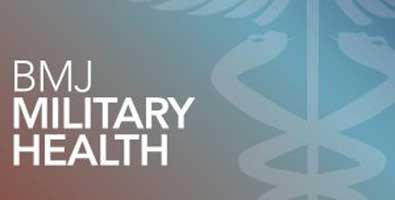
August 1, 2020 - Article on Amicapsil in Focus Forward (UK Spinal Injury Association): A new pressure ulcer treatment by Pete Hamilton
The English Spinal Injury Association brings article on Amicapsil in their magazine Focus Forward (UK Spinal Injury Association) – A new pressure ulcer treatment by Pete Hamilton
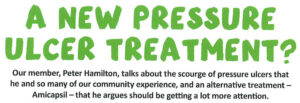
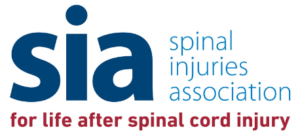
June 26, 2020 - Have You Heard of Amicapsil for Treatment of Pressure Sores? by Raquel Siganporia, Aspire Law
March 20, 2020 - New publication in the American medical journal Wounds.
2019
5-7 November 2019 - Willingsford presents its new study at the annual meeting of International Spinal Cord Society | ISCoS in Nice
30 August 2019 - Women with Wheels give an account of personal experience with Amicapsil on SPC site (suprapubic catheter) infections
16 May 2019 - Have you heard of Amicapsil for treatment of pressure sores, and if not, why not?
Raquel Siganporia, partner at Bolt Burdon & Kemp is an attorney specialised in clinical negligence, a recurrent TED-speaker and Trustee at SIA – Spinal Injuries Association. As a child, Raquel herself was paralysed due to clinical negligence. Raquel has own experience with pressure ulcers / bed sores / pressure injuries and has secured one of the biggest compensations due to pressure injuries ever to be awarded in the UK. On the blog of Bolt Burdon & Kemp, Raquel raises the issue whether people in general, and spinal injuried people in particular, know of Amicapsil, and if not, why not…
9 May 2019 - Baroness Masham of Ilton requests Amicapsil (MPPT) on the NHS during House of Lords' Debate on issues related to disability
Moved by Lord Borwick
That this House takes note of the issues facing people with disabilities and the potential for improved treatment and outcomes in the next 50 years.
During this debate, as shown in the videoclip above, Baroness Masham of Ilton, Countess of Swinton (CB), founder and president of SIA – UK Spinal Injuries Association – pointed out that Amicapsil is an effective treatment for pressure injuries and that SIA is hoping to see Amicapsil included on the NHS reimbursement list. Baroness Masham says that Amicapsil could save the NHS millions of pounds annually as well as help in the common fight against antimicrobial resistance.
Amicapsil is an approved treatment for wounds and wound infections
Baroness Masham’s speech can be seen in writing here and video here.

8 May 2019 - World Anti-Doping Agency (WADA) confirms that the use of Amicapsil as it is intended, i.e. to treat wounds, is not prohibited.
A British premier-league football club has had very good results from the use of Amicapsil on wounds in players. As Amicapsil is sprinkled onto the wound in the form of a white powder, the club had asked for assurances that the UKAD would not object to its use. The UKAD posed the question to the WADA and the answer was clear: Amicapsil used on wounds will not violate anti-doping rules.

2 May 2019 - Amicapsil highlighted during House of Lords' Debate on Antimicrobial Resistance
Lord Lansley moved the House of Lords, UK Parliament, to take note of Tackling Antimicrobial Resistance 2019–2024: the UK’s five-year national action plan.During this debate Baroness Masham of Ilton, Countess of Swinton (CB) made a spoken contribution:
“We need better preventive measures as well as alternative treatments, including innovative ways to use the body’s own immune system and healthy bacteria.
I am trying a new treatment for wounds—Amicapsil. It is micropore particle technology, a white powder applied to the wound surface. It consists of small particles composed of a network of very fine pores. It removes the toxins, and enzymes are excreted by the wound surface. It does not kill the micro-organisms. It is hoped that it is effective on antimicrobial-resistant infections.”
Above is an excerpt of Baroness Masham’s speech. Baroness Masham is furthermore the founder and president of SIA, Spinal Injury Association.

24 January 2019 - Invest in Hampshire brings article about Willingsford
14 January 2019 - MPPT technology upgraded to approved therapeutic as "treatment for wounds" in the EU
The Intended Use of the MPPT technology has today for the EU been approved as ”Treatment for wounds”. This upgrade has been approved by the responsible Notified Body “Eurofins” based a strong clinical data package and a excellent safety profile. MPPT is the only medical device approved as a treatment for wounds.
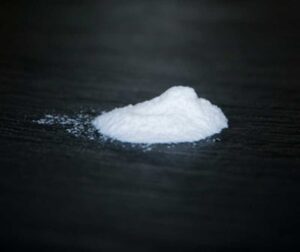
1 January 2019 - Response to Letter to the Editor, Wounds
A letter was submitted to the Editor of the US medical journal Wounds following an article on the MPPT technology, which was published in November 2018. The letter and the response can be seen here

2018
7 December, 2018 - Willingsford achieves certification under the new revised ISO13485:2016 standard.
The Quality Management System implemented by Willingsford Ltd. today renewed its certification under the new and revised ISO-standard for the manufacturing of medical devices: ISO13485:2016. The certification was performed by the European Group Eurofins.
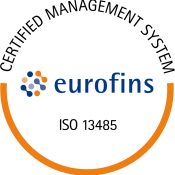
1 November, 2018 - Press release - Wound infection: Don't kill the bacteria!
A new study published today in the US medical journal WOUNDS has proven that wound infection must be treated by helping the body establish the right bacteria instead of current medical practice, which is to kill them. This is a fundamental shift in how we view infection.
It has for decades been standard practise to use antibiotics and antiseptics to kill bacteria in a wound with the aim to remove an infection. However, in 2016, the FDA concluded that wound dressings containing antibiotics and antiseptics do not remove wound infections and do not improve healing.
The outer surfaces of our body are in constant contact with the environment and it is not possible for the body to keep these sterile. Instead the body actively populates all external surfaces with particular microbes (the microbiome) to ensure there is no “vacant space”. This makes it very difficult for disease-causing microbes to gain a foothold or for one species to suddenly take over control. However, antibiotics and antiseptics indiscriminately kill bacteria and they therefore destroy the balance the body is trying to create. The result is that these treatments do not assist healing, but may even delay healing.
Using a new micropore particle technology (MPPT), it has been possible to reliably remove wound infections and support healing for a wide range of acute and chronic wounds and ulcers. This approach does not kill the bacteria but instead creates conditions that enable the body’s immune system to establish the correct balance of microbes in the wound, and achieving this balance means removing the infection. These findings therefore provide evidence that infections in the wound have to be treated fundamentally differently to infections in internal sterile body regions.
Chief Medical Officer for England, Professor Dame Sally Davies said:
“Antimicrobial Resistance (AMR) is an escalating global threat that puts millions of lives across the world in danger. We cannot rely on the development of new antibiotics alone to mitigate this threat. We need better preventative measures as well as alternative treatments, including innovative ways to use the body’s own immune system and healthy bacteria. I am proud to say the UK are leaders in research into this area.”
Prof. Dame Sally Davies also serves as Executive Board Member of WHO and is Chair of the WHO Strategic and Technical Advisory Group on Anti-Microbial-Resistance.
Background Information:
- In the UK there are annually 2.2 million wounds requiring extended treatment and the direct costs of care to the NHS is £5.3 billion annually (Guest et al. 2015). In community care, Guest et al. (2017) reported that 48% of the wounds are chronic, demonstrating the limitations of current approaches.
- The main reason wounds do not heal is due to infection (Leaper et al. 2015).
- Micropore particle technology (MPPT) consists of small particles filled with pores. They use a combination of capillary flow and evaporation to remove exudate on the wound. This micro-pumping process in parallel removes the toxins and enzymes that bacteria and fungi secrete to inhibit the immune cells and creates holes in the biofilm that bacteria and fungi secrete as a shield against the immune cells. The result is that MPPT disrupts the weaponry of bacteria and fungi, whereby the immune cells regain their ability to selective remove bacteria and fungi to create the balance it wants in the microbiome.
Reference:
Article Title: Time to Abandon Antimicrobial Approaches in Wound Healing: A Paradigm Shift
Journal: WOUNDS – A Compendium of Clinical Research and Practice, https://www.woundsresearch.com/article/sams-dodd
Publication date: 01 November 2018

1 November, 2018 - Article calling for change in clinical practice published in Wounds
A new study published today in the US medical journal WOUNDS has proven that wound infection must be treated by helping the body’s immune system establish the right microbiome instead of current medical practice, which is to eradicate it. This is a fundamental shift in how we view infection.
Publication
Title: Time to Abandon Antimicrobial Approaches in Wound Healing: A Paradigm Shift
Authors: Jeanette Sams-Dodd and Frank Sams-Dodd
Journal: WOUNDS – A Compendium of Clinical Research and Practice,
Publication date: 01 November 2018
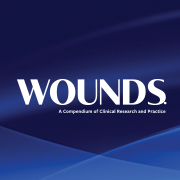
2-5 July 2018 - MPPT shows effects in pyoderma gangrenosum.
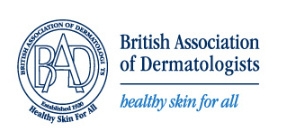
2017
25 June 2017 - Clinical evaluation of Amicapsil by the NHS published in Journal of Wound Care
Clinical audit at Bristol University Hospital, covering 9 acute dehisced surgical wounds and 1 category 4 pressure ulcer (Ryan E (2017) JoWC 26(7)413).
MPPT was able to induce a clean healing wound in 3-5 days. All wounds reached closure. Standard-of-care is 1 week with UrgoClean followed by 2 or more weeks with NPWT to reach the same state of healing as was achieved by 3-5 days with MPPT.
Health economic calculations indicate that MPPT resulted in savings of 67% to reach the healing wound state, when compared to the 1 week with UrgoClean and 2 weeks with NPWT.

25 May 2017 - Press Release: The NHS can save £1.1 billion per year on wound healing – large study documents benefits of novel technology
This month, a large clinical study was published in the recognised American scientific journal WOUNDS. The study shows that a novel Micropore Particle Technology (MPPT), when used in the healing of complicated wounds, will reduce by 60% the time to rid the wound of the complicating factors and steer it onto the path of optimal healing. It also shows that patients hospitalised due to wounds can be discharged 30% sooner.The technology removes wound infections without the use of antibiotics. Consequently, it is able to remove antibiotic resistant infections from wounds.
Annually, the NHS spends £5.3 billion on direct wound care. The first product resulting from this new technology, Acapsil, can save 21% of those costs, potentially allowing the NHS to free up £1.1 bn annually for other purposes. These calculations do not take into account the additional benefits of the reduced risks of complications or the wound becoming chronic. Nor do they consider the advantages to the patients who can resume normal life, or the reduced use of antibiotics; we can preserve the remaining effective antibiotics as last resort for other diseases and avoid creating new resistance.
The wounds and ulcers in the study were all severe and needed hospitalisation and the intervention of a consultant.
Wounds constitute a key point of entry for infections to enter the rest of the body. The technology will, therefore, have positive implications beyond wound healing, as it will prevent sepsis or infections spreading to internal organs.
“Acapsil is simple but forceful. Indirectly, it supports the patient’s own immune system and enables it to progress the wound towards healing,” explain the joint managing directors of Willingsford Ltd., Frank and Jeanette Sams-Dodd who have dedicated the past nine years to the development of Acapsil. “The immune system of the individual patient knows best what needs to be done in order to heal a wound. If the wound will not heal, it is because the immune system is being inhibited. By cancelling this inhibition, the immune system can take control and push the wound towards closure;”
They go on: “We will over the coming years experience a change in patient’s expectations of how their complicated wounds will heal and close, instead of just being managed – as is often the case at the moment. This progress will have enormous socio-economic impact. Family breadwinners need not lose their jobs. The middle-aged and elderly will be able to live unaided or independently for much longer, as wounds and ulcers often have a disabling impact on lives.”
Acapsil was approved across the entire EU in 2016. It has since been evaluated by the NHS at University Hospital Bristol. Their evaluation confirmed the findings of the larger comparative clinical study published today.
Read the article in WOUNDS
Southampton, UK, 22 May 2017 – Press Release
This press release contains forward-looking statements about Willingsford Ltd. and the product, Acapsil. Actual results could differ materially from those discussed or implied in this press release due to a number of risks and uncertainties, including the risk that Acapsil and the revenues generated from Acapsil may be affected by competition; unexpected new data; safety and technical issues; clinical trials not being completed in a timely manner, not confirming previous results, or not achieving the intended clinical endpoints; pre-clinical trials not predicting future results; label expansion requests or filings not being submitted in a timely manner; regulatory approval being delayed or not received; or manufacturing and supply issues. The potential for Acapsil may also be affected by government and commercial reimbursement and pricing decisions, the pace of market acceptance, or scientific, regulatory and other issues and risks inherent in the development and commercialisation of pharmaceutical products and medical devices.

25 May 2017 - Amicapsil comparative clinical study published in WOUNDS
The manuscript of the 266 patient clinical study with Amicapsil is published in the American scientific journal WOUNDS: A Compendium of Clinical Research and Practice.

5-6 April 2017 - Acapsil featured in 2 posters at the annual Tissue Viability Society (TVS) Conference in Edgebaston

30 March 2017 - Willingsford receives Innovate UK grant
Willingsford was today awarded a grant by Innovate UK for its micropore particle technology (MPPT), which has demonstrated clinical efficacy in wound healing.

28 March 2017 - Amicapsil at the 6'th Annual Infection Prevention and Control meeting in Holyrood, Scotland.
Amicapsil removes infections from wounds without the help of antibiotics and without contributing to the creation of new antibiotic resistance. This message was highlighted by the Amicapsil stand.

2016
7 July 2016 - Acapsil receives CE-certification
Willingsford’s lead product, Acapsil receives the CE-mark that allows its commercialisation for use on wounds in humans in the entire European Community.

26 May 2016 - Second publication co-sponsored by Willingsford on the burden of wound care in the UK.
The second article publishing the findings of the study to investigate the burden of wound care in the UK has been published.The abstract is available here:
Guest, J. F., Ayoub, N., McIlwraith, T., Uchegbu, I., Gerrish, A., Weidlich, D., Vowden, K. and Vowden, P. (2016), Health economic burden that different wound types impose on the UK’s National Health Service. Int Wound J. doi:10.1111/iwj.12603.

2015
7 December 2015 - Publication co-sponsored by Willingsford on the burden of wound care in the UK.
Willingsford has co-sponsored a study of the burden of wound care in the UK to promote a better understanding of the extent of this healthcare problem.The publication is available here:
Guest JF, Ayoub N, McIlwraith T, et al. Health economic burden that wounds impose on the National Health Service in the UK. BMJ Open 2015;5:e009283. doi:10.1136/bmjopen-2015-009283.

9 November 2015 - Willingsford wins place at Innovate UK, the largest innovation show in the UK.
Willingsford wins place at UK’s largest innovation show, Innovate UK, November 9-10, 2015.
Innovate 2015 is the UK’s largest multi-sector innovation event and is organised by Innovate UK and UK Trade and Investment (UKTI). It is set up to create opportunities for export and investment for the UK’s most innovative companies.
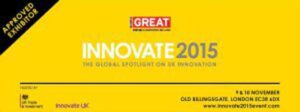
24 September 2015 - Presentation: Finding a meaningful target: pros and cons of molecular and functional assays.
Dr. Sams-Dodd from Willingsford give the presentation “Finding a meaningful target: pros and cons of molecular and functional assays” at the pre-meeting workshop “The realities and practicalities of drug discovery and development”, 18th World Congress of the International Society on Toxinology. 25-30 September 2015, Oxford, UK.
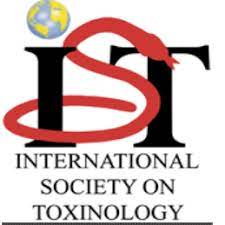
2014
1 August 2014 - Publication: Effects of SertaSil on wound healing in the rat.
A scientific study comparing the effects of SertaSil on wound healing to a topical antibiotic is published in Journal of Wound Care. See the abstract.
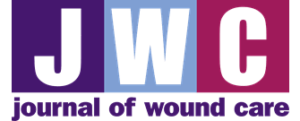
26 June 2014 - Scientific American Worldview 2014 features SertaSil in their new annual issue tracking innovation globally.

2 February 2014 - Presentation: Functional Approaches to CNS Drug Discovery and the Potential for Drugs with Multiple Targets as a Mechanism of Action.

20 January 2014 - Presentation: Target-based or phenotypic drug discovery – which is better or is that the wrong question?
Dr. Sams-Dodd from Willingsford gave an invited presentation “Target-based or phenotypic drug discovery – which is better or is that the wrong question?”, which discusses different types of drug discovery approaches at the annual meeting of Society for Laboratory Automation and Screening in San Diego, California, USA.

2013
5 September 2013 - SertaSil- First of its kind. Equestrian Life Magazine, September 2013.

1 April 2013 - Publication: Is poor research the cause of the declining productivity of the pharmaceutical industry? - An industry in need of a paradigm shift.
Dr. Sams-Dodd from Willingsford publishes a review article in Drug Discovery Today on the problems the pharmaceutical industry has had the pased decade in identifying new effective drugs.
Review article: Sams-Dodd, F. (2013) Is poor research the cause of the declining productivity of the pharmaceutical industry? – An industry in need of a paradigm shift. Drug Discovery Today, vol. 18 (5-6):211-7. http://www.ncbi.nlm.nih.gov/pubmed/23131208

2012
13 December 2012 - Publication: How To Lower Attrition Rates In Labs.
4 December 2012 - Publication: R&D Spending & How To Find New Drugs.
Dr. Sams-Dodd from Wililngsford publishes online article on drug discovery: R&D Spending & How To Find New Drugs. Pharmalot Dec. 4, 2012.
12 June 2012 - Willingsford moves to new laboratory facilities in Southampton, UK.
Willingsford has relocated its facilities to the New Forest Enterprise Centre in Southampton, where it currently is setting up laboratory and manufacturing operations.




